1.入门
第一个C语言程序
#include <stdio.h>
int main()
{
printf("hello,world .");
return 0;
}

注意 : 单独的反斜杠 是 下一行时上一行的组成部分
#include <stdio.h>
int main()
{
print\
f("hello , world\hello");
return 0;
}
2.变量
-
英文字母 数字下划线组成 a-zA-Z 0-9 _
-
字母下划线开头
-
变量名区分大小写
-
避开关键字
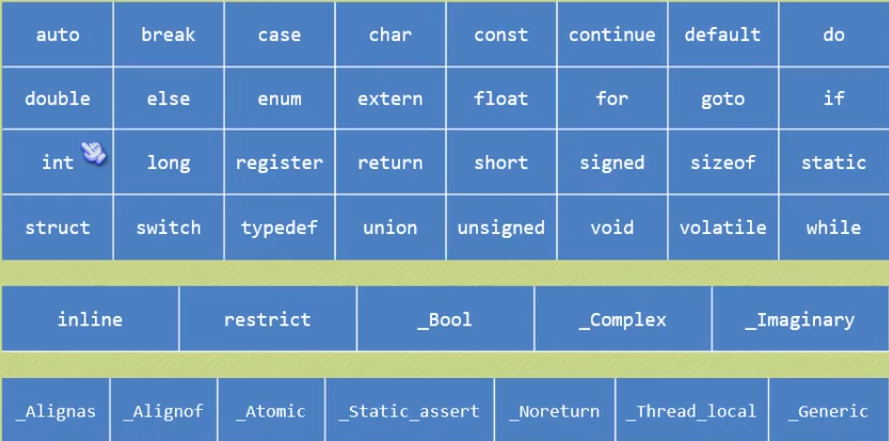
44个关键字,C11标准
3.数据类型
-
char 字符型 一个字节
-
int 整型 所用机器整数的最自然长度
-
float 单精度浮点型
-
double 双精度浮点型
-
_Bool 布尔类型enum
-
enum枚举类型
-
声明变量
#include<stdio.h> int main() { int a; char b; float c; double d; a = 520; b = 'f'; #注意是单引号 c= 3.14; d = 3.1415269853; printf("hello world年度%d\n",a); printf("hello world is %cish\n",b); printf("I love %c ishC.com!\n", b); printf("圆周率是%.2f\n",c); printf("圆周率精确到小数点9位是%11.9f\n",d); return 0; } -
sizeof运算符,数据类型货表达式的长度
printf("我的url是%d\n",sizeof(a));
-
手打
4.常量
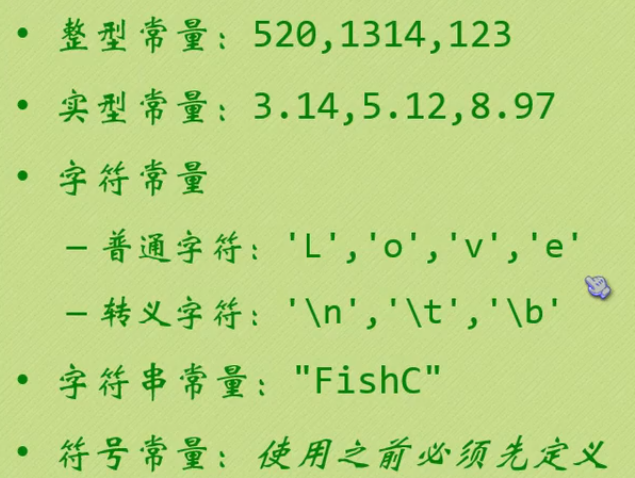
-
定义常量
格式 :
#define 标识符 常量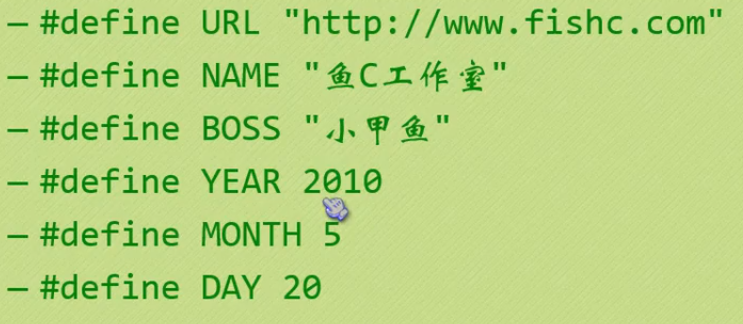
标识符的命名和变量规则一致,一般都全大写
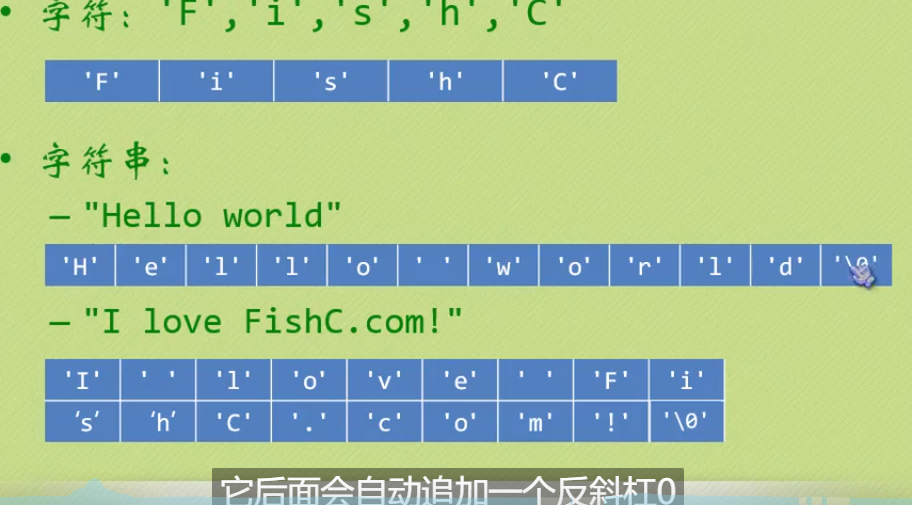
会在后面加一个
\0
5.运算符
-
算数运算符
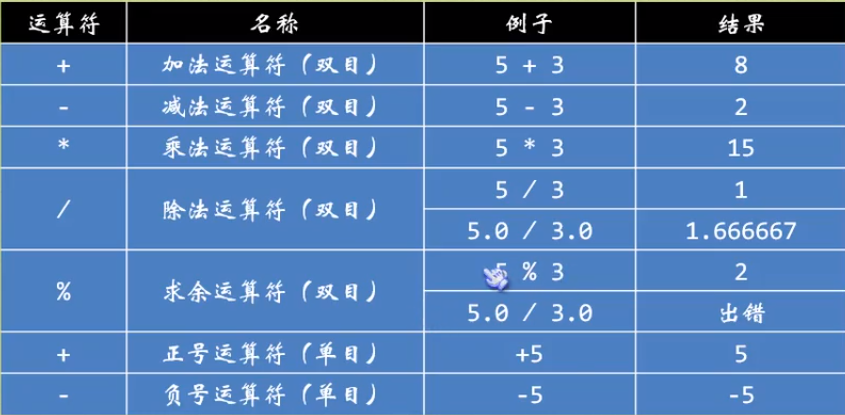
-
关系运算符, == !=
-
逻辑 !非 &&与 ||或
短路求值: 只有单第一个操作数无法确定逻辑值时,才会第二个运算数进求职
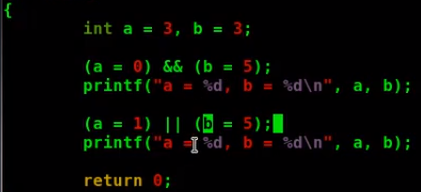
0 3 1 3
-
if分支



